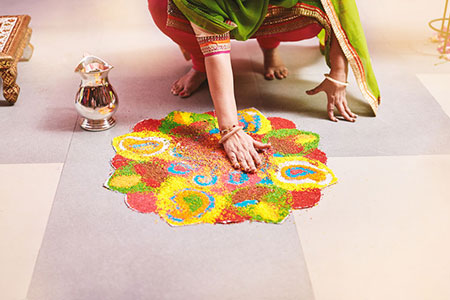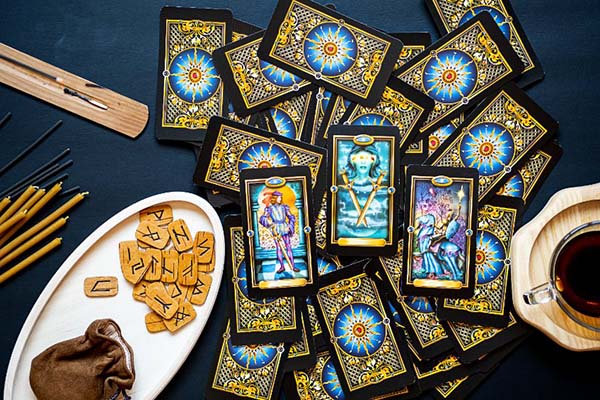subliminal
How To Develop Your Intuition
 We all have access to spiritual inner guidance in the form of our intuition, and the more we pay attention to it, the stronger it will become. Intuition is like a muscle, so the more we develop it, the stronger it becomes.
We all have access to spiritual inner guidance in the form of our intuition, and the more we pay attention to it, the stronger it will become. Intuition is like a muscle, so the more we develop it, the stronger it becomes.
The following strategies can help to hone your intuitive abilities and learn to better listen to your powerful ‘sixth sense.’ Use these strategies to help you to tune into your inner wisdom and develop your relationship with your intuitive guidance. Intuition is a soul awareness that we are all born with and the more we engage with it, the stronger it will become for us.
Awareness
Intuition is a very low key, subliminal form of awareness. It is not highly charged like our emotions tend to be, and so it can easily go unnoticed.
Intuition for people who are less aware usually is only noticed when it presents as an uneasy sensation or a foreboding feeling. It can be difficult to put your finger on exactly what the sensation or feeling is. Intuition can also be a ‘knowing’ without any sensation or feeling.
The first step to begin working with your intuition is to pay more attention to it! So, when you have that tell-tale sensation or subtle feeling, or that vague sense of knowing, focus on being more present with it. Ask yourself questions about what you are experiencing.
For example, if it’s a knowing, does it come with any other sensations or feelings in your body? If so, where do you sense it in the body? What does it feel like? Emotions tend to be very pronounced and charged.
The Deeper Meaning Of Color Stereotypes
 Have you ever heard the expression someone “talks a blue streak?” It refers to a person who talks rapidly and non-stop. But why use the adjective blue? I suspect it may originate from the metaphysical tradition of the color blue being associated with speaking one’s truth (throat chakra) and creative expression. People who gravitate towards this color are often creatives or performers, such as designers, fine artists, singers, dancers, and so on.
Have you ever heard the expression someone “talks a blue streak?” It refers to a person who talks rapidly and non-stop. But why use the adjective blue? I suspect it may originate from the metaphysical tradition of the color blue being associated with speaking one’s truth (throat chakra) and creative expression. People who gravitate towards this color are often creatives or performers, such as designers, fine artists, singers, dancers, and so on.
Communicating succinctly is the most powerful way we can make a connection with others beyond our subliminal energy connections with everyone around us. An over-abundance of words, however, translates into a lack of trust on the speaker’s part that she is not accepted by others, be it family members, coworkers, friends, or stranger she encounters along her life path. Speaking clearly and concisely is an art.
The color red also holds a fascination for me, as I perceive it to be a color that is so amazingly misunderstood. Red is generally interpreted as the color of anger, such as “I was so mad, I was seeing red.” Red is also used to denote danger in road signs and red cars are said to be associated with speed and aggressive driving.
But the color red also has many positive symbolic meanings in different cultures, including about passion, excitement, love, vigor, health, life and even spiritual zeal.
Another brilliant color that is often misrepresented is black. Once again, it is generally seen as a color related to depression, sadness, gloom, negativity and evil. In my view black stands out as a harmonious hue. If we see it in a positive light, black can be considered as a sharply defined, elegant color. It is symbolic of power, mystery, and sophistication. No one can deny the glamour of showing up to a dinner party in a smart little black dress or a tailored black tuxedo.
The Healing Power Of Positive Self-Talk
 Most people indulge more in negative self-talk, than positive. But self-talk is not supposed to be negative and overly critical. We are supposed to use it to encourage, empower and motivate ourselves to achieve success and follow our dreams.
Most people indulge more in negative self-talk, than positive. But self-talk is not supposed to be negative and overly critical. We are supposed to use it to encourage, empower and motivate ourselves to achieve success and follow our dreams.
Our brain has the conscious mind, the subconscious mind, and what is known in hypnosis as the critical factor of mind. This critical factor is that part of our consciousness that checks and filters every through and idea that enters our mind. It is like the gatekeeper or the guardian between the conscious mind and the subconscious. That is how hypnosis works – it is a way to bypass the critical factor so that we can access the subconscious and reprogram it with new information and insights for healing and self-empowerment.
The role of the critical factor is to protect our mind, but this is not always a good thing. Because of the job the critical mind is tasked to do, it tends to be critical of everything. It is unfortunately also that part of our brain that says we are not worthy or deserving, that we cannot do things, or achieve things.
I cannot get the job I really want.
I’m not worthy of a happy, healthy relationship.
I am not smart and pretty enough.
People just don’t like me.
Why do bad things always happen to me?
The one big problem with the critical factor is that it does not always see or hear things the way they really are. It can convince of things that are not true at all. For example, it may you that others are trying to get you fired from a job, when in fact the boss is trying to help you keep your job.
Unlock The Power Of Your Subconscious Mind
 We are problem-solving beings, which is why we have thrived on this planet for so long. Where do the ideas for solutions come from?
We are problem-solving beings, which is why we have thrived on this planet for so long. Where do the ideas for solutions come from?
Well, our conscious mind can come up with a lot of simple solutions to everyday problems. However, when it comes to more significant issues, it is our subconscious that saves the day.
As incredible as it may seem, experts claim that only 10% of our mind power can be attributed to the conscious mind, whilst a whopping 90% can be credited to the subconscious!
The subconscious mind is a mysterious, powerful phenomenon. I call it the ‘genie within.’ It is our gateway to universal intelligence and infinite wisdom. It is our pathway to higher consciousness. It is also a powerful aspect of our ability to create and manifest through the Universal Law of Attraction.
For example, when my son was small, my husband and I bought a beautiful yellow car. The car was indeed a pleasure to drive. However, my husband used to tease me and say things like, “You have a posh car – I wish I had a car like that! He would say it time and time again, but with no malice intended.
The problem was not so much what said, but rather how my subconscious interpreted his words. Inside I felt unworthy of such a car and guilty for having one far better than my spouse.
Unfortunately, within less than a year of owning my beautiful new vehicle, it was hit by a massive truck and smashed to smithereens. No longer did I have a ‘posh car.’ While I felt terribly sad about this and incredibly out of pocket at the same time, I did feel more at peace.
Mandala Meditation
 Mandala is an ancient word simply meaning ‘circle’ in Sanskrit. Mandalas are patterns which range from simple to complex, and are said to represent the Universe and its energies. Varying designs have appeared for centuries in cultures around the world. These beautiful and intriguing works of art can be used in any meditative practice.
Mandala is an ancient word simply meaning ‘circle’ in Sanskrit. Mandalas are patterns which range from simple to complex, and are said to represent the Universe and its energies. Varying designs have appeared for centuries in cultures around the world. These beautiful and intriguing works of art can be used in any meditative practice.
To use a mandala in your spiritual practice, begin by choosing one which has special meaning for you, or has a design you personally find harmonious. Many can be found online, in design books, or in color-it-yourself art books. The colors and patterns can also hold intrinsic meanings.
When you have found a mandala you like, use it as a focal point for meditation. State your intent beforehand. While studying the design of your mandala, let your mind stray into the subconscious.
This work is quite similar to candle or crystal work, in that the imagery directs our thoughts rather than the other way around. If you’ve ever found yourself getting lost in the patterns of a tile floor, or the wallpaper in a favorite room, then you’re already well-equipped for mandala work!

